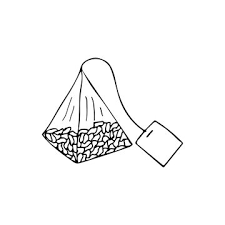About the block:
Himalayan salt blocks are slabs of pure, mineral-rich salt harvested from ancient salt mines in northern Pakistan. The rose-hued, marbled character of Himalayan salt is due to its mineral content, making each individual brick not only a one-of-a-kind visual masterpiece but an incredibly versatile addition to any kitchen.
Salt blocks can be heated or chilled to extreme temperatures and can retain those temperatures for longer than traditional cooking surfaces while providing excellent heat distribution. Additionally, salt blocks will mildly season meats and vegetables as they cook, enhancing flavor naturally and infusing your food with beneficial trace minerals and electrolytes absent from table salt. Used properly, a salt block will continuously provide new ways to season, grill, and serve your favorite foods!
Handling:
It’s perfectly normal for your salt block to exhibit minor cracks and lines, but if you follow a few simple guidelines you can easily preserve the life of your block for meals to come. Heating your block to high temperatures too quickly can result in further splits so it’s recommended that you always heat it slowly, especially the first few times you use it. Avoiding contact with direct heat aids in this process, so if you own an electric range, make sure to separate the block from your stove with a circular metal ring such as a cake ring or a springform pan with its bottom removed.
On the Stove: To ensure proper heating, begin on low for 15 minutes, increase to medium for 15 minutes, and then increase to high for 15 minutes. Sprinkle a few drops of water on it and if they evaporate immediately, your block is ready. It may take a little bit of time, but it’s worth it!
On the Grill: Place your block directly on the grate. For gas grills, begin on low heat and build to high heat using the same gradual stovetop method. For charcoal grills, place coals on one end of the grill and your salt block on the other, on top of the grate and away from direct heat.
In the Oven: To avoid heating your salt block too quickly, which could result in cracking, we recommend that you gradually heat your block on the stovetop. After your salt block has reached cooking temperature, you can move it to the heated oven (make sure to use thick oven mitts as salt blocks retain extreme heat).
When your block is sufficiently heated, you can get cooking! Things to keep in mind:
- Foods that are cut thinly and cook rapidly are ideal as it prevents over-salting.
- Foods that are low in fat will absorb the salt more thoroughly so if you feel your food is over-salted, you can add a tiny bit of oil to repel the salt.
- Don’t worry if your block changes color or develops cracks over time—it’s natural.
Your salt block will retain its cooking temperature for a long period of time, so do what we do and move it to a trivet for cooking right at your dinner table. Shrimp, bay scallops, and thin slices of meat work particularly well. Blocks are also great for serving cold appetizers, too. Simply refrigerate your salt block overnight and use to serve cheeses and dry meats. This will keep your appetizers cool and tasting fresh. Want to save your block for dessert instead? Keep it overnight in the freezer and use it to serve scoops of ice cream in a brand new way. Remember, it’ll take some time to get used to cooking on salt so make sure to have fun and try a variety of foods!
Cleaning and Storage:
When you’re finished cooking, let your block rest and cool completely. Since salt will dissolve, the key to cleaning your block is to keep it as dry as possible. That means no running water, no soaking, and definitely no dishwasher! When cool to the touch, dampen a sponge and scrub any food matter off its surface. Dry it with a paper towel or dishcloth and store it in a dry space, away from humidity.
Finally, your salt block will deteriorate with use. We know, it’s sad but true. With proper care, it can last for dozens of meals, but when it becomes too small or uneven to cook with you can still grind it down and use it as you would traditional table salt. Salt blocks: good to the last grain!
CAUTION: Keep in mind that salt blocks are hot, heavy, and hard to handle. Please use caution. Thick, high-heat oven mitts are recommended when handling or moving your heated salt block.
Visit us online for the finest selection of organic spices, organic teas, and culinary salts.










